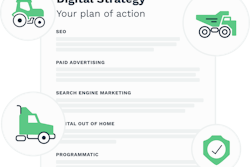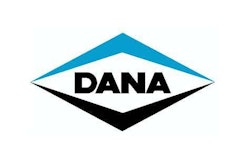
An increase in truck sales is coming, but it still might be a few quarters away, Chris Brady, principal at Commercial Motor Vehicle Consulting (CMVC), shared during MEMA’s monthly Pulse webinar on Wednesday.
With a focus on macro and microeconomic factors, Brady used Wednesday’s webinar to show how changes to global and North American business conditions are impacting freight demand, and how carrier operations have evolved during this current, extended period of market softness.
Focused first on the big picture, Brady said while the global economy is not contracting, growth rates have slowed, which has hampered profits across industries and slowed investment. Easing inflation worldwide and lower interest rates in the U.S. are likely to reverse the latter trend, but that won’t happen immediately.
Brady said often “there’s a lag” between those things occurring and the business community responding. Investment may not increase in the fourth quarter but could arrive early in 2025. Brady also downplayed the risk of a recession — barring a “shock event” like increased geopolitical instability — stating the current stretch of uninspiring growth is more likely to be followed by a positive turn than a negative one.
[RELATED: MacKay's Blodgett addresses recession potential and market conditions]
Brady’s outlook is thus strong for the trucking sector, where he believes carriers have finally rightsized capacity with freight demand. Brady said shippers earned the upper hand in negotiating with carriers in early 2023 and have enjoyed that position of power — though it might be ending.
“We’re kind of at a neutral state right now. Freight rates are in balance,” he said.
Which is great news for trucking, as the shipping environment will again become more favorable for truck fleets. Said Brady, “The pricing power pendulum will swing toward carriers and they’ll gain power to raise rates.”
But, he added, that doesn’t mean every carrier is loading up for a pre-buy.
Brady said truck sales across the U.S. are driven by normal replacement demand, capacity increases and then a pre-buy, in that order, and it’s too early to know how many carriers will choose to participate.
Brady said CMVC estimates “growth in 2025 will be sluggish to moderate” but will increase in 2026 and 2027. He said when business investment ramps up, carriers will want to increase capacity and strong supply chains should enable OEMs to increase production quickly. Brady said how much of the market’s likely 2026 growth will be attributable to a pre-buy probably won’t be known until its underway.
A stronger freight environment will undoubtedly motivate and enable carriers whose trade cycles are up to order more units next year and into 2026, but Brady said those purchases shouldn’t be mistaken for a pre-buy. Ordering more trucks on schedule and pulling forward orders ahead of schedule are different business decisions.
Brady also noted that OEMs, vendors or dealers who encourage orders to participate in a pre-buy should be prepared for a downslide on the other side. “If you pull forward, that impacts sales in 2027,” he said.
[RELATED: Heavy Duty Dialogue offers suppliers guidance for a pre-buy]
A pre-buy also will have an impact on used truck and aftermarket demand. Brady said the former could suffer more than the latter. The used truck market is still working through the glut of equipment that flooded its sector after the last order boom in 2021. Brady said the used space will see a similar increase in 2026 and 2027 regardless of a pre-buy, but it would be better for the space for truck orders to grow naturally than due to regulation because organic growth means used truck demand also will be on the rise.
In the parts space, Brady noted any pre-buy to lower the average vehicle age would have an immediate impact on parts demand, but that it shouldn’t be a huge drag on the space. He again noted a natural increase in fleet capacity and utilization due to freight growth would help cushion the parts space against any major downturn. He added CMVC’s Parts Sales Indicator, which has trended down for a year and a half, should reverse course fairly soon.
Overall, Brady told Wednesday’s attendees to stay positive about their business as the year closes. “The environment is slowly improving; it’s just going to take some time,” he said.












